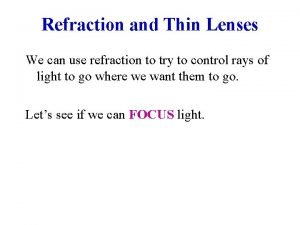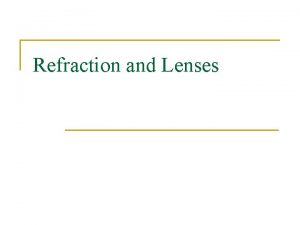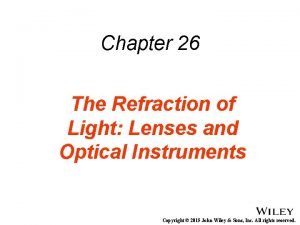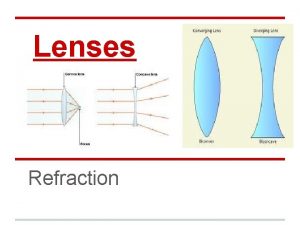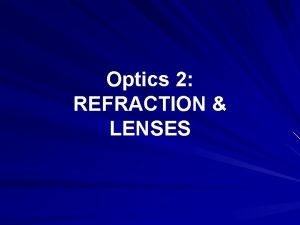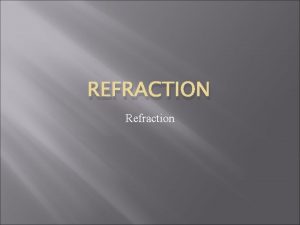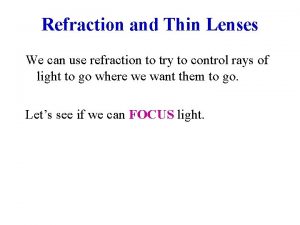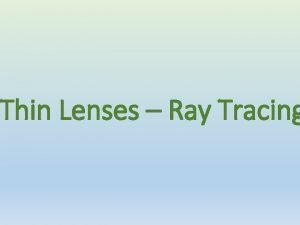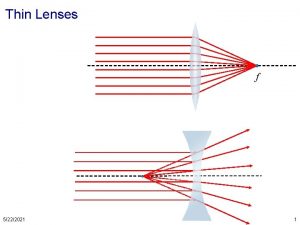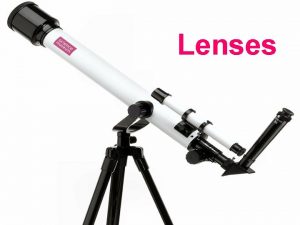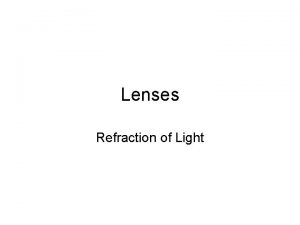Thin Lenses An Application of Refraction There are











- Slides: 11

Thin Lenses An Application of Refraction

There are 2 basic types of lenses A converging lens (Convex) takes light rays and bring them to a point. A diverging lens (concave) takes light rays and spreads them outward.

General Terms Focal point – point where distant light rays will converge or diverge from Focal length – the distance from the center of the lenses to the focal point. Principal axis – horizontal plane that cuts the lens in half.

General Terms Magnification – ratio of image to object Object distance – distance from object to center of lens. Image distance – distance from image to center of lens.

Types of images Real images – occur when actual light rays intersect. Image can be projected onto a screen. Occur on the opposite side of the lens from the object. Virtual images – light rays never intersect. Image cannot be projected onto a screen. Occur on the same side of the lens as the object.

Types of Images Real images Virtual Images + di, -M, -hi - di, +M, +hi Always inverted (below prin axis) Always upright (above prin axis) Only produced by converging lens Produced by both converging and diverging lenses

Positive vs. Negative The object is always on the positive side of the lens ( object distance (do) is always positive). Anything on the opposite side of the lens from the object is positive. Anything on the same side of the lens as the object is negative. Above the principal axis is positive; below negative.

Converging Lenses Produce real or virtual images. If do > focal length, then image is real. Focal point is (+) for calculations. (converge at + focal point) Example Sketch:

Diverging Lenses Produce on virtual and reduced images. Focal point is (-) for calculations (diverge from – focal point). Light rays never actually intersect. Example Sketch:

Thin Lenses Equations 1/f = 1/do + 1/di M = - di / do or hi / ho Keep track of positive and negative values.

Examples An object is placed 35 cm in front of a converging lens with focal length of 20 cm. Calculate the image’s position relative to the lens as well as the image’s characteristics.
 What kind of shape
What kind of shape Insidan region jh
Insidan region jh Mirror and lens equation
Mirror and lens equation Refraction of light in lenses
Refraction of light in lenses There is there are ejemplos
There is there are ejemplos There is there are part of speech
There is there are part of speech There is there are negative form
There is there are negative form Countable and uncountable there is there are
Countable and uncountable there is there are No there aren't
No there aren't There is there are
There is there are All of the cds even the scratched one
All of the cds even the scratched one Here there over there
Here there over there
